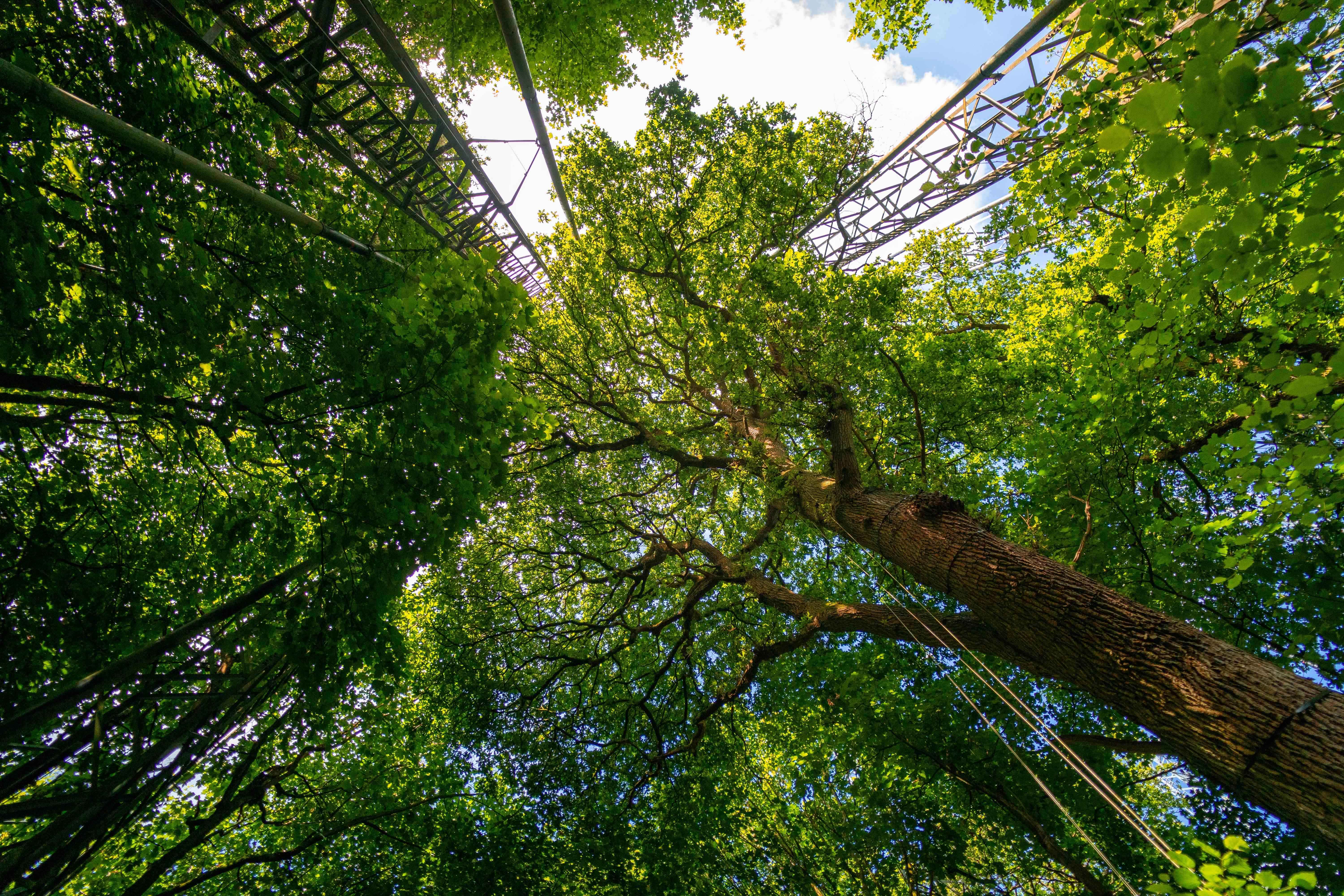New research reveals how mature natural forests combat climate change

Scion’s Dr Alan Jones has contributed to a landmark UK study that demonstrates how mature natural forests respond to elevated levels of carbon dioxide in the atmosphere.
The seven-year study in central England and published in the prestigious journal Nature Climate Change with lead-author Professor Richard Norby, Honorary Professor, University of Birmingham, shows that despite their slow growth and age, mature natural forests absorb and retain additional carbon from the atmosphere even when CO2 concentration levels are boosted to levels similar to what the world is likely to see in 2050.
This evidence provides scientists with insights into the important role of natural forests in mitigating climate change and offers a new perspective on the global carbon cycle.
It also marks the first experimental demonstration of the “CO2 fertilisation effect” in a mature, natural (non-planted) temperate forest. The research, led by the Birmingham Institute of Forest Research, revealed that mature forests, with oak trees more than 180 years old, show increased woody biomass growth in response to elevated CO2. This discovery has implications for our understanding of similar mature natural forests worldwide, including New Zealand's native forests, says Jones.
While it is generally understood that young trees sequester a lot of carbon as they grow, the ‘BIFoR FACE’ study showed for the first time that mature temperate forests have the capacity to sequester additional carbon from the atmosphere, acting as a carbon sink.
“The results indicate that temperate old-growth native forests, similar to what we have in large areas of New Zealand native forest, or native forest areas recovering from historic logging, could respond to increasing carbon-dioxide levels with increased rates of tree growth in the future.”
“Importantly, the CO2 fertilisation effect provides a crucial buffer, buying us all valuable time to mitigate and reduce carbon emissions globally.”

To carry out the Free Air Carbon Enrichment experiment, researchers installed six 30-metre diameter rings of towers within the forest, which released computer-controlled streams of CO2 into the forest atmosphere. This increased the CO2 concentration of targeted forest patches to levels expected in the atmosphere by 2050 – 550 parts per million or a 38% increase on today’s CO2 levels.
Jones, a silviculture and forest carbon scientist, led the installation and monitoring of dendrometers—precision instruments that measure tree growth to the nearest millimetre. This detailed data, collected over several years by Jones and a team of citizen scientists, was vital in demonstrating a statistically significant increase in tree growth due to elevated CO2 levels.
The project also carried out tree ring analysis and laser scanning to verify these changes in tree volume.
"The use of dendrometers, combined with other sensitive measurement methods, allowed us to capture a detailed picture of tree growth over multiple seasons," explains Dr. Jones. "This multidisciplinary approach was crucial in verifying our results."

Mystery Carbon Sink
For over two decades, Jones says scientists have grappled with the concept of the "mystery carbon sink"—unidentified terrestrial regions absorbing carbon faster than anticipated. This study substantiates the hypothesis that temperate forests play an important role in this process.
"There is now evidence that mature temperate forests contribute significantly to increased uptake of carbon dioxide in response to elevated CO2," says Jones. "This helps address one of the major questions in climate science.”
The findings are prompting scientists to re-examine how natural forests respond to climate change. One discovery is that large, old trees are disproportionately responsible for carbon uptake, challenging previous assumptions that younger forests would respond more rapidly to increased CO2 levels.
"The fact that mature trees, which we previously thought might be less responsive due to their slower growth rates, are taking up significant amounts of additional carbon is a surprising and important finding," says Jones. "This highlights the significant role that ancient trees play in our global carbon cycle."
The £15 million research project, based in a private forest in Staffordshire and associated with the University of Birmingham, has ongoing funding until 2035. This support will allow scientists to monitor long-term trends and potential changes in forest response to elevated CO2 levels.
"There are still many questions to answer," says Jones. "We need to know whether the growth response will persist over time or if the system will become saturated with CO2. Future research will also focus on nutrient cycling, particularly nitrogen and phosphorus, to understand how these forests sustain increased growth."
ENDS

